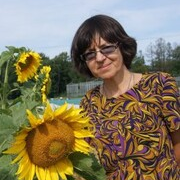Genetic Resources of Cereal and Oilseed Crops for Sustainable Breeding and Food Security II
A special issue of Plants (ISSN 2223-7747). This special issue belongs to the section "Plant Genetics, Genomics and Biotechnology".
Deadline for manuscript submissions: 20 March 2025 | Viewed by 13162
Special Issue Editors
Interests: genetic diversity; seed storage proteins (polymorphism, genetic control, genomic organization); cytoplasmic male sterility–restoration of fertility (CMS-Rf) genetic systems; theoretical and applied aspects of interspecific hybridization (with special emphasis on sunflower)
Special Issues, Collections and Topics in MDPI journals
2. Laboratory of Plant Genetics, N.I.Vavilov Institute of General Genetics, Russian Academy of Sciences. 119334 Moscow, Russia
Interests: crop genetics and genomics; plant breeding; biodiversity and evolution
Special Issues, Collections and Topics in MDPI journals
Interests: cultivated plants and wild relatives; genetic diversity; plant breeding; resistance to harmful organisms
Special Issues, Collections and Topics in MDPI journals
Special Issue Information
Dear Colleagues,
Cereal and oilseed crops are indispensable for the existence of humankind. They are ubiquitously used for human and animal nutrition, medicinal purposes, and obtaining ecologically friendly materials. Genebanks play an important role in the conservation and the study of plant genetic resources. Collections of genetic resources of cereal and oilseed crops conserved in Genebanks include thousands of accessions that represent old and modern varieties, landraces, breeding lines, and also wild species that can be used for breeding new genotypes with valuable traits.
Due to the domestication "bottleneck" effect in human history, the genetic basis of a number of cereal and oilseed crop species is comparatively narrow. Hybridization with landraces and wild species significantly facilitates the broadening of the genetic diversity of breeding material for resistance to harmful organisms and tolerance to abiotic stressors. Distant hybridization may bring completely new traits that can revolutionize crop breeding and production. As an example, the phenomenon of cytoplasmic male sterility (CMS) and fertility restoration, which is an important factor of speciation during plant evolution, has gained new significance as the basis for seed production in heterotic hybrid breeding.
The second volume is designed to collect scientific papers on cereal and oilseed crops. We welcome original research, review articles, and communications.
Dr. Irina N. Anisimova
Dr. Svetlana Goryunova
Dr. Eugene Radchenko
Guest Editors
Manuscript Submission Information
Manuscripts should be submitted online at www.mdpi.com by registering and logging in to this website. Once you are registered, click here to go to the submission form. Manuscripts can be submitted until the deadline. All submissions that pass pre-check are peer-reviewed. Accepted papers will be published continuously in the journal (as soon as accepted) and will be listed together on the special issue website. Research articles, review articles as well as short communications are invited. For planned papers, a title and short abstract (about 100 words) can be sent to the Editorial Office for announcement on this website.
Submitted manuscripts should not have been published previously, nor be under consideration for publication elsewhere (except conference proceedings papers). All manuscripts are thoroughly refereed through a single-blind peer-review process. A guide for authors and other relevant information for submission of manuscripts is available on the Instructions for Authors page. Plants is an international peer-reviewed open access semimonthly journal published by MDPI.
Please visit the Instructions for Authors page before submitting a manuscript. The Article Processing Charge (APC) for publication in this open access journal is 2700 CHF (Swiss Francs). Submitted papers should be well formatted and use good English. Authors may use MDPI's English editing service prior to publication or during author revisions.
Keywords
- cereal and oilseed plants
- genetics and genomics
- biodiversity and evolution
- distant hybridization agronomically important traits
- CMS-Rf genetic systems
Benefits of Publishing in a Special Issue
- Ease of navigation: Grouping papers by topic helps scholars navigate broad scope journals more efficiently.
- Greater discoverability: Special Issues support the reach and impact of scientific research. Articles in Special Issues are more discoverable and cited more frequently.
- Expansion of research network: Special Issues facilitate connections among authors, fostering scientific collaborations.
- External promotion: Articles in Special Issues are often promoted through the journal's social media, increasing their visibility.
- e-Book format: Special Issues with more than 10 articles can be published as dedicated e-books, ensuring wide and rapid dissemination.
Further information on MDPI's Special Issue polices can be found here.
Related Special Issue
Planned Papers
The below list represents only planned manuscripts. Some of these manuscripts have not been received by the Editorial Office yet. Papers submitted to MDPI journals are subject to peer-review.
1. Elena Gultyaeva1*, Ekaterina Shaydayuk1, Ekaterina Shreyder 2, Igor Kushnirenko2
Genetic diversity of promising spring wheat germplasm from Russia and Kazakhstan for rusts resistance
2. Yakov Demurin
Allelic interaction of Or7 gene of broomrape resistance in sunflower
3. Irina N. Anisimova
Genetic Resources of cereal and oilseed crops for heterotic hybrid breeding







